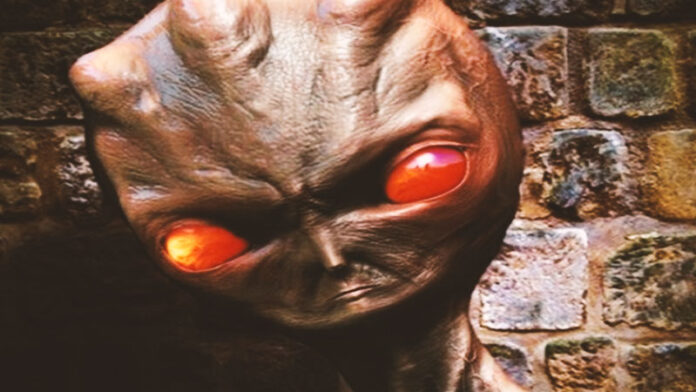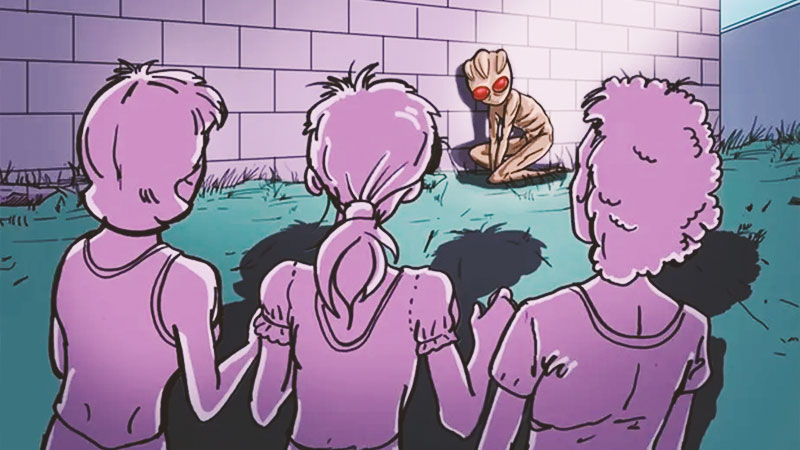
Unicamp (State University of Campinas), founded in 1966, has achieved a reputation that has little to do with the academic area: scholars of ufology, a science that studies the UFO phenomenon (Unidentified Flying Objects), point to the university as a shelter for creatures extraterrestrials and the largest Brazilian research center on life beyond Earth.
For this reason, ufologists nicknamed Unicamp the Brazilian Area 51, in reference to the restricted military area in the Nevada desert, in the United States, so secret that the US government only admitted its official existence in 1994 and with many restrictions. According to ufologists, the place would host extraterrestrials and captured spacecraft, a fact never confirmed or denied by the US government.
According to ufologists, Unicamp became the main center for Brazilian extraterrestrial research from 1996 onwards, with the Varginha ET incident.
Varginha’s ET

The incident occurred in the city of Varginha, Minas Gerais, and involved the appearance of a UFO and at least three extraterrestrial beings that culminated in the capture of the creatures by Brazilian authorities, one of which was reportedly taken to Unicamp, where it remains until today.
On January 20, 1996, three girls claimed to have seen one of the creatures near a vacant lot, which had brown, slimy skin, huge red eyes and three protuberances on the top of its head, which was very large.
A couple also claimed to have seen a UFO on the outskirts of the city and another witness claimed to have witnessed the UFO crash and military personnel collecting its debris.
On the same night, a USAF aircraft entered Brazilian airspace without authorization, but was quickly clearenced and landed at Viracopos airport, in the city of Campinas. From there, the US military went to Varginha in two Brazilian Air Force helicopters.
“The Army went to the scene, but the ET was no longer there as he had been taken in an ambulance. The military went after it and intercepted the ambulance. ET was removed from the ambulance and taken to Unicamp, where he was studied. It was one of the most important cases in Brazilian and global ufology. And there are many witnesses”, said José Fernando de Moraes Pinto, biologist and researcher on the subject.
For ufologists, the creature found in the city of Varginha was taken to Unicamp, located in the city of Campinas.
Unicamp

According to ufologists, the Unicamp testing laboratory, which would have dead and living creatures from other planets, would be located underground and became known as Pavilion 18.
The site is uniquely furnished and would be located close to the Institute of Chemistry and the Faculty of Medical Sciences.
“We have seen Army soldiers with large-caliber weapons and also private security guards who are around the place throughout the day, but we cannot know much, as the place is not accessible to students and people in general”, said ufologist Ricardo Roehe.
Roehe explains that, with the successful analysis of Varginha’s ET, which would have survived and been kept there until today, the university was chosen to receive other creatures. From there, the underground laboratory would have been built to host the extraterrestrials.
“The extraterrestrials captured in Varginha are there, as are others captured alive or slaughtered in the interior of the country”, said the ufologist.
Unicamp spoke out and denied the information.
“The information that Unicamp is carrying out research or harboring supposed extraterrestrials on its premises is not valid. The institution interprets the matter as a myth that has thrived in the popular imagination and denies any statement or insinuation in this regard”, said the university in an official statement.
The Brazilian Army declared that the information about the presence of Army soldiers protecting an area at Unicamp is unfounded and the investigation carried out by the Brazilian Army, completed in 1997, concluded that people saw a man on the ground and mistook him for a supposed extraterrestrial.




















